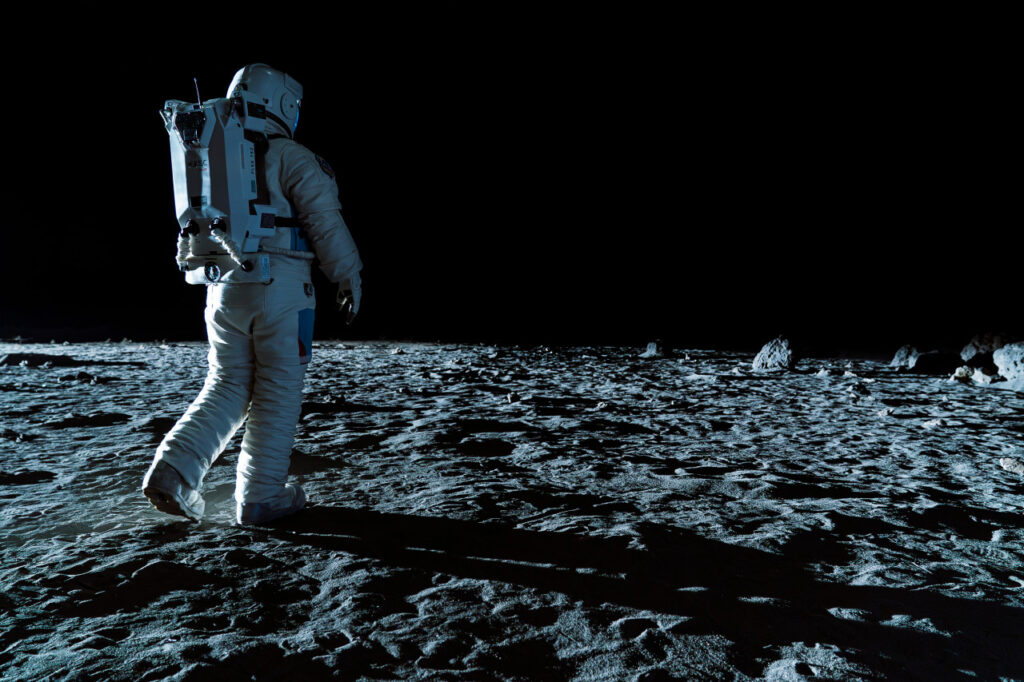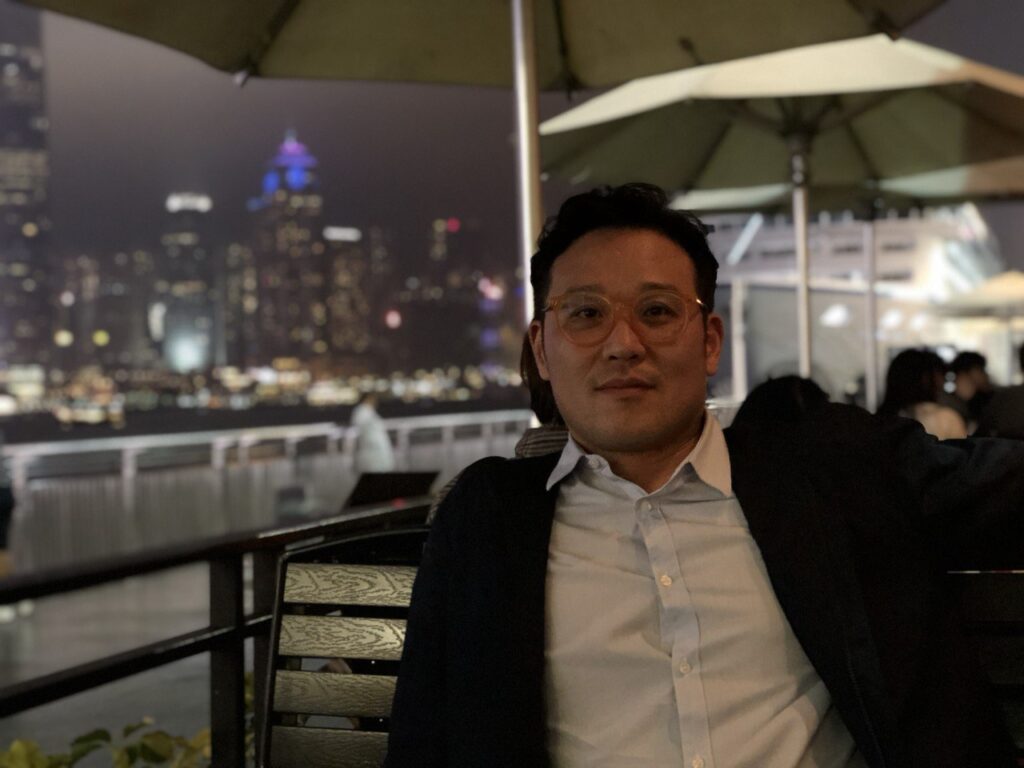Dexter Studios, a Seoul-based digital production company working on both Korean and international projects, is renowned for its virtual production and VFX work, including projects such as ‘Alienoid’, ‘Yu Yu Hakusho’, ‘Along with the Gods’, and ‘Gyeongseong Creature’. Dexter Studios has made strong moves towards Universal Scene Description (OpenUSD), including seamless integration into their pipeline using custom tools to make workflows more efficient between teams.

Still from The Moon. Image courtesy of Dexter Studios
As content demand surges, creative studios are increasingly focused on balancing quality and efficiency. Finding tools and methods to streamline asset and data sharing for artists and directors is crucial, especially in an industry that has long struggled with inconsistent pipeline standards between companies.
How do VFX and animation studios improve this workflow without sacrificing the directors’ vision, artists’ skillsets and overall creativity? Dexter Studios is at the forefront of advocating for solutions to these frustrations. Founded in 2012, the Seoul-based production studio has grown to include 330 members, including 200 dedicated VFX artists, and five subsidiaries.
They take on both Korean and international projects, including the recent live-action ‘Yu Yu Hakusho’ and ‘Parasyte: The Grey’ films on Netflix, plus the live-action international release ‘Knights of the Zodiac: Saint Seiya’.
Having joined as VFX leads in Dexter Studios’ starting year, both Jong-hyun Jin and Jay Seung Jaegal have seen the company grow alongside the industry. Jong-hyun was a founding member of the studio and works today as a VFX Supervisor and Head of Production Management. He’s worked on the Netflix series ‘Gyeongseong Creature’, ‘Along with the Gods’, and ‘The Moon’. Fellow VFX Artist and Supervisor, Jay, heads the VFX Department and considers ‘Alienoid’, a two-part fantasy science-fiction film series, his flagship work, as it won many VFX accolades.
Behind Dexter Studios’ diverse, international portfolio is an efficient pipeline and a continued vision for future growth. Jay and Jong-hyun provide insight on how they improved Dexter Studios’ creative workflow over the past decade to realize these ambitions, through virtual production and OpenUSD integration with the Autodesk Design & Make software.
Expediting film production with modern VFX techniques and tools

Still from Ashfall. Image courtesy of Dexter Studios
Dexter Studios is most known for its VFX work in film, but it boasts a complete creative pipeline, including concept art, pre-visualization, lighting, rendering, compositing, and more.
The company takes special pride in its virtual production (VP) work, including its subsidiary Studio D1, which Jong-hyun says has helped expedite film production overall by acting as a bridge between VFX needs and real-life acting.
“Recently, the speed of content production has become very fast,” Jong-hyun said. “In the case of Korea, the dependency on VFX and VP in content production has significantly increased as well. The challenge is to produce high-quality visuals within a short post-production period. By leveraging both VFX and VP allows us to use the entire production period flexibly and reduce time, which I think is very effective.”

Jong-hyun, Founder, VFX Supervisor and Head of Production Management at Dexter Studios
Dexter Studios’ toolkit includes many industry-standard pieces of software, both in virtual production and visual effects work.
“Maya is a tool at the center of our company’s work process,” Jong-hyun explained. “It plays a major role in creating assets, and we mainly use it in processes such as animation and pre-visualization.”
Dexter Studios uses Autodesk Maya not only for its CGI quality and flexible animation tools such as custom rigging, but also its versatility and ease of integration with other software, which is important with the broad toolkit they utilize for many projects.
Developing custom automated VFX solutions to push towards OpenUSD
Despite animators and VFX artists often using overlapping software, it’s no secret that processes and asset standards are often incongruent, even at the most well-known production studios. Plus, as the film industry grew more demanding over the past decade, efficiency has become equally important to quality, and studios were looking for ways to adapt.
The largest part of Dexter Studios’ solution for efficiency was moving towards integrating Universal Scene Description (OpenUSD) into their pipeline. One part of that integration process was a custom in-house automation tool that Dexter Studios developed, allowing cross-team data updating for OpenUSD through Maya.
“We use a self-developed in-house tool called VELOZ to manage the pipeline, communicate with whoever does the next steps or entire parts during the work process, and do the publishing,” Jay explained. “We manage the file system in an integrated way through OpenUSD. When the workers publish in each part, the data is automatically transferred to the next part in VELOZ, and within USD, each version is automatically updated to the latest version. This minimizes human errors and allows us to efficiently manage the data, as we can go back to the previous version data at any time.”

Still from The Moon. Image courtesy of Dexter Studios
In its first four years, Dexter Studios saw an increase in workload from about 2,000 shots to 8,000 shots each respective year. After introducing OpenUSD and VELOZ, it maintains this average with better expedience, handling 6,000 to 8,000 shots and 11 to 12 projects each year since then.
“The biggest advantage of OpenUSD is that the process speeds up, reducing the number of processes in between, thereby saving time,” said Jay. Plus, Jong-hyun noted that these processes, in conjunction with VELOZ, greatly reduced error in asset exchanges and boosted Dexter Studios’ efficiency.
Expanding Dexter Studios’ scope, hopes, and ambitions for VFX and animation
Looking into the future, Dexter Studios hopes other studios join the industry movement to adapt OpenUSD and make it better along the way—for both itself and fellow companies.
“We don’t think the OpenUSD pipeline we’re using now is perfect, so we’re continually researching and developing to improve its efficiency,” said Jay of this direction. “Moreover, what I hope for is that, if not only us but also other companies, adopt OpenUSD pipeline, the efficiency in co-working will greatly increase. So, we’re having a lot of discussions about this with other companies.”
Dexter Studios is also looking to expand its scope as an “all-encompassing content studio” in the wake of its growth. Already, it has subsidiary studios for virtual production, sound production, and original intellectual property development, but the company aims to tap into ever-growing technologies and platforms.

Jay Seung Jaegal, VFX Artist, Supervisor and Head of the VFX Department at Dexter Studios
“We’re always exploring new frontiers, expanding our scope to include exciting areas like realistic content, AR/VR/XR,” explained Jay.
This includes turning their sights towards AI technologies, including Wonder Dynamics, an Autodesk company.
“We specifically heard the news that Wonder Dynamics joined Autodesk,” Jong-hyun pointed out. “We expect that if Wonder Dynamics is incorporated as a main feature in Maya, many production processes will be simplified, and efficiency will be maximized.”
With the animation and VFX space growing through technology and in creative scope, Dexter Studios works with its production workflow automation solutions to ensure that its creative ambitions come with as little friction as possible.
See how top VFX studios use Autodesk Design and Make software to unlock new cosmic realms of creativity, expand their offerings, and streamline processes with automation.